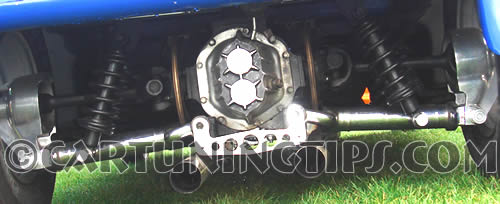Handling modifications.
Most cars are set up for comfort from the factory. It is actually surprising the difference between cars coming from the same production line. Small variations in suspension geometry can dramatically alter the performance handling of a car.
Even top of the line hot hatches and performance models will benefit from suspension upgrades and handling improvements. Generally you want to lower the center of gravity and minimise body roll.
Each driver will have different preferences and race teams will set up the cars tuning differently depending on the circuit being raced.
We will generally set our cars with a compromise towards comfort as we make long journeys and have to cope with uneven road surfaces.
Lowering the car will usually improve its cornering ability. Going too low can cause problems in the driveshaft and gear train.
You will also suffer from uneven tyre wear so research your settings carefully and take regular tire tread depth reading to determine uneven tyre wear in the early stages.
Anti roll bars will help cornering by keeping all 4 wheels firmly planted on the ground. Without and anti-roll bar a car will tend to lift the outside rear wheel on fast bends reducing cornering grip by 25%.
In the wet though an anti roll bar can actually cause under-steer. The rolling motion encourages the wheels on the outside of the bend to dig into the road surface and with a roll bar fitted this happens to a much lower degree so cornering suffers. Many people with roll bars will disconnect them on track days if it is raining.
Fitting stiffer springs and uprated dampers will improve things further. The springs absorb the bumps of the road so on a hard setting the car may actually skip over potholes, whereas on a softer setting they will be in contact with the road surface for much longer.
The dampers control the rate of change in the cars vertical motion and prevent the car bouncing.

